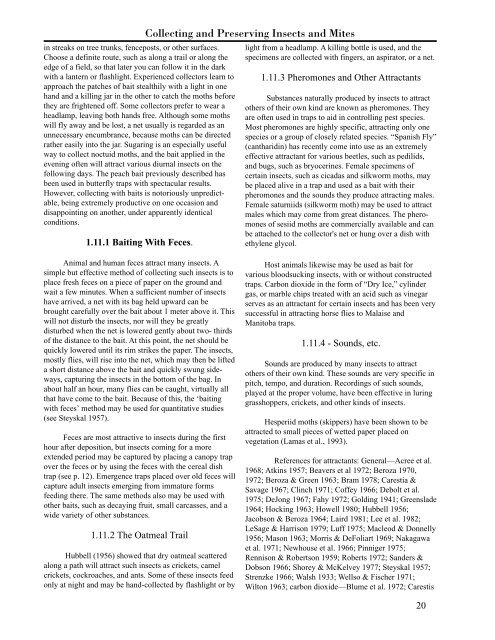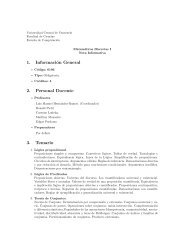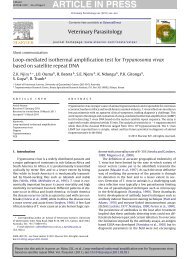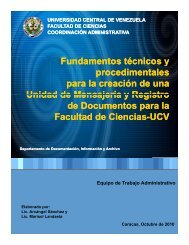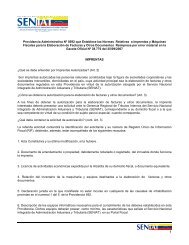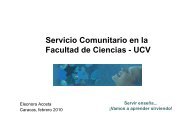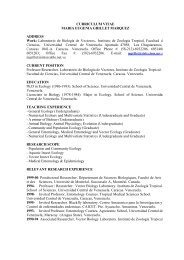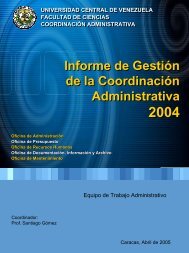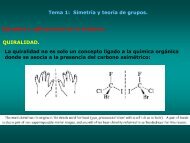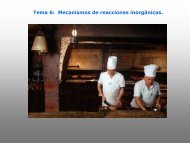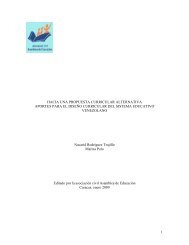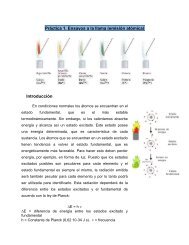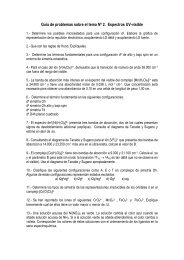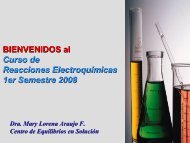Collecting and Preserving
Collecting and Preserving
Collecting and Preserving
- No tags were found...
Create successful ePaper yourself
Turn your PDF publications into a flip-book with our unique Google optimized e-Paper software.
in streaks on tree trunks, fenceposts, or other surfaces.Choose a definite route, such as along a trail or along theedge of a field, so that later you can follow it in the darkwith a lantern or flashlight. Experienced collectors learn toapproach the patches of bait stealthily with a light in oneh<strong>and</strong> <strong>and</strong> a killing jar in the other to catch the moths beforethey are frightened off. Some collectors prefer to wear aheadlamp, leaving both h<strong>and</strong>s free. Although some mothswill fly away <strong>and</strong> be lost, a net usually is regarded as anunnecessary encumbrance, because moths can be directedrather easily into the jar. Sugaring is an especially usefulway to collect noctuid moths, <strong>and</strong> the bait applied in theevening often will attract various diurnal insects on thefollowing days. The peach bait previously described hasbeen used in butterfly traps with spectacular results.However, collecting with baits is notoriously unpredictable,being extremely productive on one occasion <strong>and</strong>disappointing on another, under apparently identicalconditions.1.11.1 Baiting With Feces.<strong>Collecting</strong> <strong>and</strong> <strong>Preserving</strong> Insects <strong>and</strong> Miteslight from a headlamp. A killing bottle is used, <strong>and</strong> thespecimens are collected with fingers, an aspirator, or a net.1.11.3 Pheromones <strong>and</strong> Other AttractantsSubstances naturally produced by insects to attractothers of their own kind are known as pheromones. Theyare often used in traps to aid in controlling pest species.Most pheromones are highly specific, attracting only onespecies or a group of closely related species. “Spanish Fly”(cantharidin) has recently come into use as an extremelyeffective attractant for various beetles, such as pedilids,<strong>and</strong> bugs, such as bryocerines. Female specimens ofcertain insects, such as cicadas <strong>and</strong> silkworm moths, maybe placed alive in a trap <strong>and</strong> used as a bait with theirpheromones <strong>and</strong> the sounds they produce attracting males.Female saturniids (silkworm moth) may be used to attractmales which may come from great distances. The pheromonesof sesiid moths are commercially available <strong>and</strong> canbe attached to the collector's net or hung over a dish withethylene glycol.Animal <strong>and</strong> human feces attract many insects. Asimple but effective method of collecting such insects is toplace fresh feces on a piece of paper on the ground <strong>and</strong>wait a few minutes. When a sufficient number of insectshave arrived, a net with its bag held upward can bebrought carefully over the bait about 1 meter above it. Thiswill not disturb the insects, nor will they be greatlydisturbed when the net is lowered gently about two- thirdsof the distance to the bait. At this point, the net should bequickly lowered until its rim strikes the paper. The insects,mostly flies, will rise into the net, which may then be lifteda short distance above the bait <strong>and</strong> quickly swung sideways,capturing the insects in the bottom of the bag. Inabout half an hour, many flies can be caught, virtually allthat have come to the bait. Because of this, the ‘baitingwith feces’ method may be used for quantitative studies(see Steyskal 1957).Feces are most attractive to insects during the firsthour after deposition, but insects coming for a moreextended period may be captured by placing a canopy trapover the feces or by using the feces with the cereal dishtrap (see p. 12). Emergence traps placed over old feces willcapture adult insects emerging from immature formsfeeding there. The same methods also may be used withother baits, such as decaying fruit, small carcasses, <strong>and</strong> awide variety of other substances.1.11.2 The Oatmeal TrailHubbell (1956) showed that dry oatmeal scatteredalong a path will attract such insects as crickets, camelcrickets, cockroaches, <strong>and</strong> ants. Some of these insects feedonly at night <strong>and</strong> may be h<strong>and</strong>-collected by flashlight or byHost animals likewise may be used as bait forvarious bloodsucking insects, with or without constructedtraps. Carbon dioxide in the form of “Dry Ice,” cylindergas, or marble chips treated with an acid such as vinegarserves as an attractant for certain insects <strong>and</strong> has been verysuccessful in attracting horse flies to Malaise <strong>and</strong>Manitoba traps.1.11.4 - Sounds, etc.Sounds are produced by many insects to attractothers of their own kind. These sounds are very specific inpitch, tempo, <strong>and</strong> duration. Recordings of such sounds,played at the proper volume, have been effective in luringgrasshoppers, crickets, <strong>and</strong> other kinds of insects.Hesperiid moths (skippers) have been shown to beattracted to small pieces of wetted paper placed onvegetation (Lamas et al., 1993).References for attractants: General—Acree et al.1968; Atkins 1957; Beavers et al 1972; Beroza 1970,1972; Beroza & Green 1963; Bram 1978; Carestia &Savage 1967; Clinch 1971; Coffey 1966; Debolt et al.1975; DeJong 1967; Fahy 1972; Golding 1941; Greenslade1964; Hocking 1963; Howell 1980; Hubbell 1956;Jacobson & Beroza 1964; Laird 1981; Lee et al. 1982;LeSage & Harrison 1979; Luff 1975; Macleod & Donnelly1956; Mason 1963; Morris & DeFoliart 1969; Nakagawaet al. 1971; Newhouse et al. 1966; Pinniger 1975;Rennison & Robertson 1959; Roberts 1972; S<strong>and</strong>ers &Dobson 1966; Shorey & McKelvey 1977; Steyskal 1957;Strenzke 1966; Walsh 1933; Wellso & Fischer 1971;Wilton 1963; carbon dioxide—Blume et al. 1972; Carestis20


